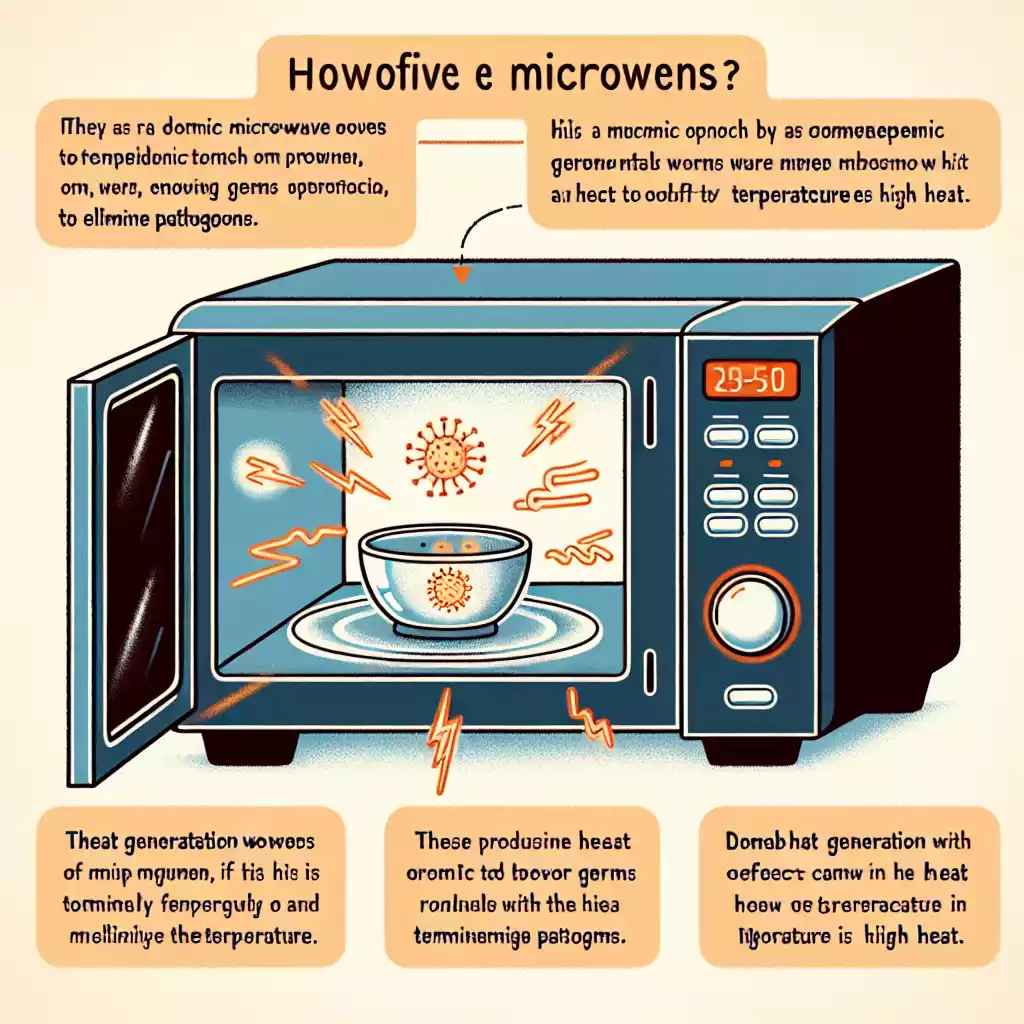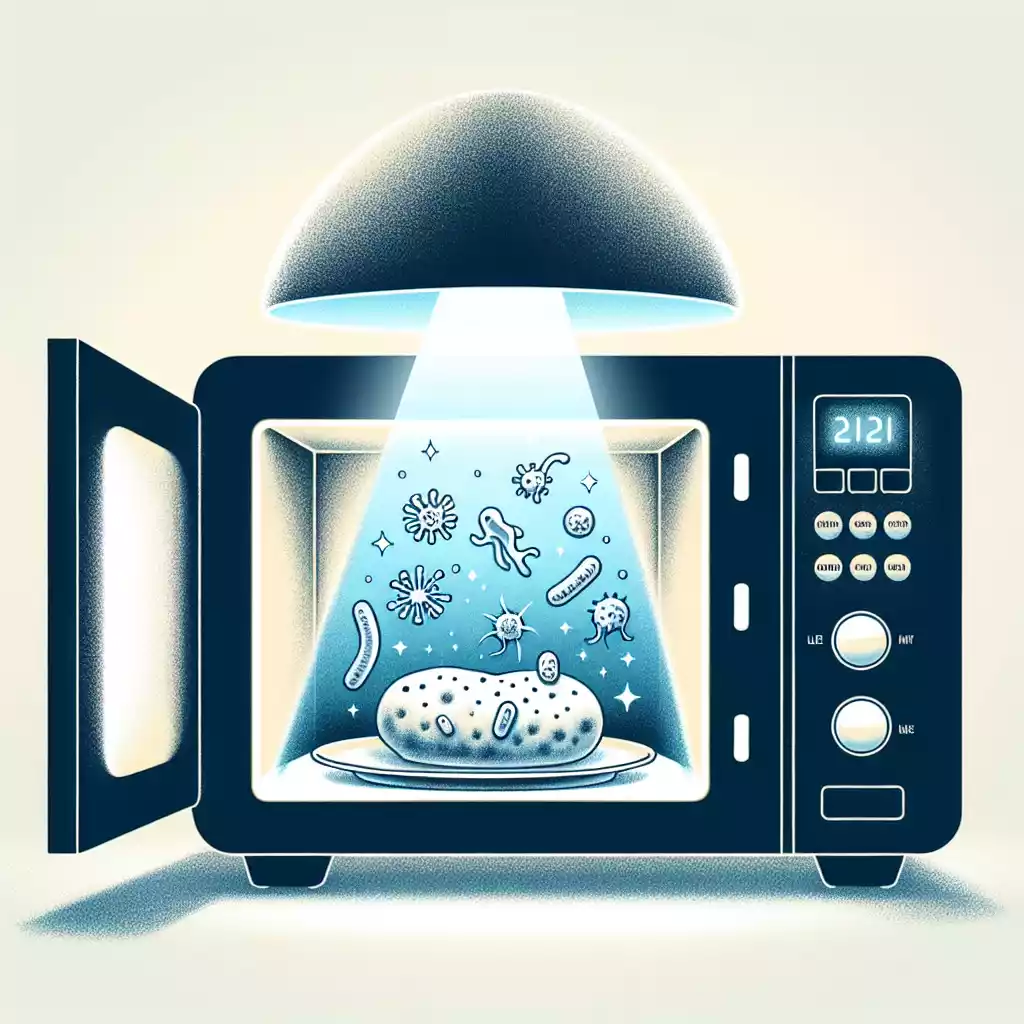Understanding Microwaves and Their Function
The Science Behind Microwaves
Microwaves are a type of electromagnetic radiation, similar to radio waves but with a shorter wavelength. They work by agitating water molecules in food, causing them to vibrate and produce heat. This heat then cooks the food. Microwaves are commonly used in households due to their efficiency and convenience. But how do they interact with germs and bacteria?
How Microwaves Heat Food
Microwaves penetrate food and cause water molecules to oscillate rapidly, generating heat from the inside out. This method of cooking is different from conventional ovens, which heat food from the outside in. The heat generated by microwaves can potentially kill germs and bacteria, but there are factors to consider.
Germs and Bacteria: An Overview
Types of Germs Found in Food
Food can harbor various types of germs, including bacteria, viruses, and fungi. Some common bacteria found in food include Salmonella, E. coli, and Listeria. These pathogens can cause foodborne illnesses, leading to symptoms like nausea, vomiting, and diarrhea.
Common Bacteria and Their Effects
Bacteria like Salmonella and E. coli are notorious for causing severe food poisoning. They thrive in certain conditions and can multiply rapidly. Understanding how these bacteria behave is crucial for determining the effectiveness of microwaves in killing them.
Mechanism of Killing Germs with Microwaves

Heat and Its Role in Killing Germs
Heat is a well-known method for killing germs. When food is heated to a certain temperature, the proteins and enzymes in bacteria denature, leading to their death. Microwaves generate this heat by causing water molecules to vibrate.
Microwave Radiation and Its Impact on Germs
Microwave radiation itself doesn’t kill germs directly. It’s the heat produced by the radiation that does the job. However, uneven heating can be a problem, leaving some areas of the food undercooked and potentially harboring live bacteria.
Effectiveness of Microwaves in Killing Different Germs
Viruses and Microwaves
Viruses are generally more resistant to heat compared to bacteria. However, microwaves can still be effective if the food is heated evenly to a high enough temperature. Studies have shown that microwaving can deactivate viruses, but it may require longer cooking times.
Bacteria and Microwaves
Microwaves are effective against bacteria if the food reaches the necessary temperature throughout. For example, Salmonella is killed at 165°F (74°C). Ensuring even heating is crucial to eliminate all bacterial presence.
Fungi and Microwaves
Fungi, including molds and yeasts, can also be killed by microwave heat. These organisms are generally less heat-resistant than bacteria and viruses, making microwaves a viable option for eliminating them from food.
Safety and Precautions When Using Microwaves
Proper Use of Microwaves
To maximize the germ-killing potential of your microwave, follow these tips:
• Stir food halfway through cooking to ensure even heating.
• Use microwave-safe containers to avoid chemical leaching.
• Cover food with a lid or microwave-safe plastic wrap to trap steam, which helps in killing germs.
Common Mistakes to Avoid
• Not stirring food: This can result in uneven heating.
• Using the wrong containers: Some materials can release harmful chemicals when microwaved.
• Overcrowding the microwave: This can prevent food from heating evenly.
Comparing Microwaves to Other Germ-Killing Methods
Traditional Cooking Methods
Traditional cooking methods like boiling, baking, and frying are effective at killing germs because they involve consistent high temperatures. Microwaves can be just as effective if used correctly.
Chemical Disinfectants
Chemical disinfectants are often used for surfaces but are not suitable for food. Microwaves offer a safer alternative for killing germs in food without introducing harmful chemicals.
Practical Tips for Using Microwaves to Kill Germs
Best Practices for Heating Food
• Ensure food reaches an internal temperature of at least 165°F (74°C).
• Rotate and stir food to promote even heating.
• Allow food to stand for a few minutes after microwaving to let residual heat continue killing germs.
Microwave-Safe Containers
Use containers labeled as microwave-safe. Avoid using:
• Plastic containers not labeled microwave-safe.
• Metal containers, which can cause sparks.
• Styrofoam containers, which can melt and release chemicals.
Limitations of Microwaves in Killing Germs
Situations Where Microwaves May Not Be Effective
• Large, dense foods: These may not heat evenly, leaving cold spots where germs can survive.
• Frozen foods: If not properly thawed, the interior may remain at a temperature that allows bacteria to thrive.
Food Items That Require Extra Care
• Poultry and meats: Ensure these are thoroughly cooked, as they are prone to harboring harmful bacteria.
• Leftovers: Reheat thoroughly to avoid any remaining bacteria.
Historical References and Studies
Early Research on Microwaves and Germs
Initial studies in the mid-20th century explored the potential of microwaves for sterilization. Researchers found that microwaves could kill bacteria, but uneven heating was a significant challenge.
Recent Studies and Findings
Modern research continues to explore the effectiveness of microwaves in killing germs. Recent studies have shown that microwaves can be effective, but proper usage is key to ensuring safety.
Myths and Misconceptions About Microwaves
Common Myths Debunked
• Myth: Microwaves kill all germs instantly.
• Fact: Microwaves can kill germs, but the food must reach the appropriate temperature.
• Myth: All containers are safe to use in the microwave.
• Fact: Only use containers labeled as microwave-safe.
Facts vs. Fiction
Understanding the facts can help you use your microwave more effectively and safely. Don’t rely on myths; always follow best practices.
User Experiences and Testimonials
Real-Life Stories
Many people have successfully used microwaves to reheat leftovers and kill germs. Personal anecdotes highlight the importance of following guidelines to ensure food safety.
Expert Opinions
Food safety experts agree that microwaves can be effective if used correctly. They emphasize the importance of even heating and proper container usage.
Environmental Impact of Using Microwaves
Energy Consumption
Microwaves are energy-efficient compared to conventional ovens. They cook food faster, using less electricity. This makes them a greener option for daily cooking.
Waste Management
Using microwaves can reduce food waste by allowing you to safely reheat leftovers. However, it’s essential to use microwave-safe containers to minimize plastic waste.
Future Innovations in Microwave Technology
Emerging Technologies
Advancements in microwave technology aim to address the issue of uneven heating. Innovations like inverter technology promise more consistent cooking.
Potential Improvements
Future microwaves may include sensors to detect and adjust cooking times automatically, ensuring food reaches the necessary temperature to kill germs.
FAQs
How long should I microwave food to kill germs?
Microwave food until it reaches an internal temperature of at least 165°F (74°C). This usually takes 2-3 minutes for small portions, but always use a food thermometer to check.
Can microwaves kill all types of bacteria?
Microwaves can kill most bacteria if the food is heated evenly to the appropriate temperature. However, some bacteria may be more resistant and require longer cooking times.
Is it safe to microwave food in plastic containers?
Only use containers labeled as microwave-safe. Avoid using plastic containers that are not explicitly marked for microwave use, as they can release harmful chemicals.
Do microwaves kill viruses in food?
Microwaves can deactivate viruses if the food is heated evenly to a high enough temperature. However, viruses are generally more heat-resistant than bacteria.
How does microwave power level affect germ-killing efficiency?
Higher power levels can cook food faster, but may not always ensure even heating. It’s often better to use a medium power level and cook for a longer time, stirring frequently to ensure even heating.
Conclusion
Microwaves can be an effective tool for killing germs in food, provided they are used correctly. Ensuring even heating, using microwave-safe containers, and following best practices are crucial for maximizing their germ-killing potential. While microwaves offer a convenient and energy-efficient option, they are not foolproof. Understanding their limitations and proper usage can help you safely enjoy your meals without worrying about harmful germs.

